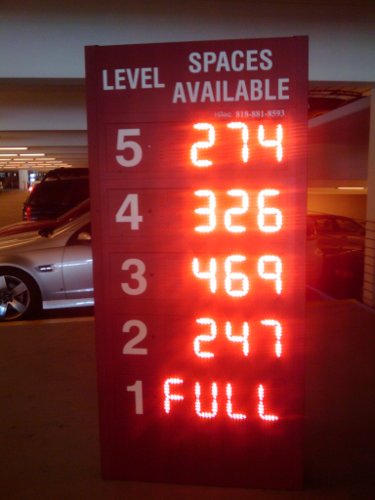A couple of months ago I started a job near LAX. I live in central Orange County, 40 miles away. Unfortunately, that includes driving through the mess of Los Angeles freeways during rush hour. It’s a horrendously frustrating slog through stop-and-go and slow-and-go traffic that has me ready to gnaw off my own leg well before I get to work.
To make things easier, what I’ve been doing is driving about half-way to the end of the LA Metro Green Line in Norwalk, then taking the train the rest of the way. It’s worked out pretty well so far:
- It cuts my driving time in half.
- The part of the drive that it cuts out includes the worst of the traffic (east-west on the 105, or 405, or 91).
- I get some extra reading time.
- It’s relatively cheap ($1.50 each way, plus 35¢ to transfer to a local bus for the last mile).
It saves a lot of stress. The main downside is that I can’t drive anywhere during lunch, but at least there are a lot of options within walking distance. Unfortunately, the parking lot in Norwalk is often full when I get there, so some days I end up driving the whole trip anyway.
In theory, I could take trains the entire way. There’s a Metrolink station a couple of miles from where I live. Unfortunately, the Metrolink system and Metro system only share one transfer point: Union Station in Downtown Los Angeles. I’d have to go really far out of my way, and transfer across two or three different Metro lines. Or else stop at Norwalk/Santa Fe and take a bus across town to the Green Line. With all the extra transfers, it didn’t seem worth it.
Still, the first day back at work after J was born, I figured my sleep-deprived self could use the break.
The Metrolink Experience
The thing to remember is, Metrolink isn’t light rail. It’s commuter rail.
The ride itself? Great. The trains were nice and roomy. Some of the cars had seats with tables. I even tethered my laptop to my phone to catch up on some blogging.
On the downside…
It’s expensive. Metro costs $1.50 to ride anywhere in the system, plus 35 cents to transfer to a bus for the last mile. Metrolink costs me $7.75 each way, but includes free Metro & local bus transfer. Monthly passes, of course, would cut down both prices.
Trains don’t run as frequently. I missed a train and had to wait 40 minutes for the next one. (I actually missed two trains, the first because I had to drive around the block to the alternate parking lot…so I spent an hour waiting just to get on the train.)
Trains don’t run into the evening. The last Metrolink train heading south from Norwalk leaves at 6:51. With two buses and a train between me and that train station, and every transfer a potential delay. This time I lucked out: The bus I took from work got me to Aviation station just in time for me to catch the green line, which got me to the end of the line just in time for me to catch the Norwalk bus, which got me to the Metrolink station with 5 minutes to spare. Just a couple of minutes at any of those points could have added 10-20 minutes of waiting and left me scrambling for an alternate way to make those last 20 miles home.
That last one is the kicker. For me, the main point of taking the train instead of driving is to reduce stress so that I can focus better when I need to. If I have to spend half the trip home worrying about making that last train, what’s the point?
